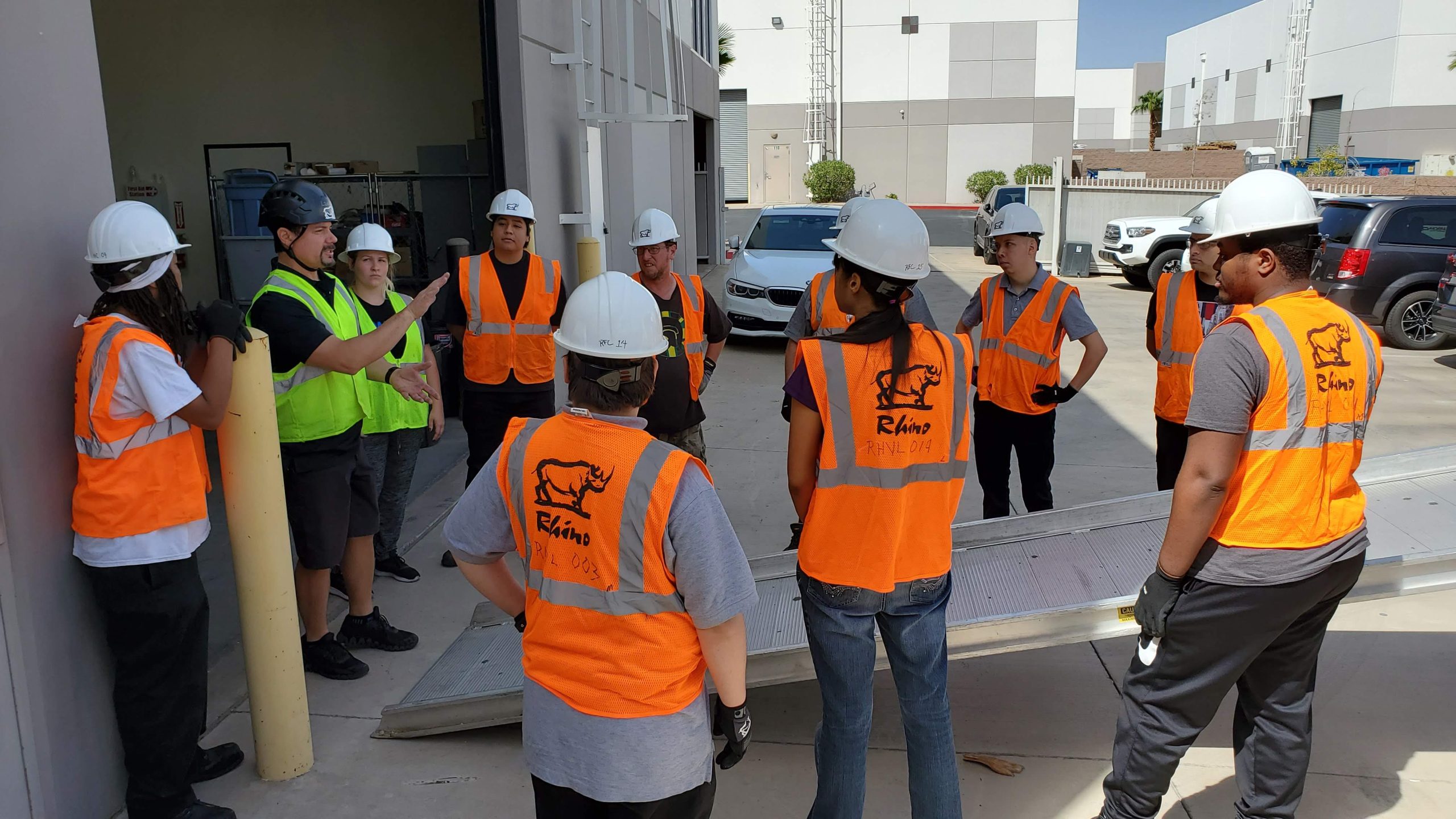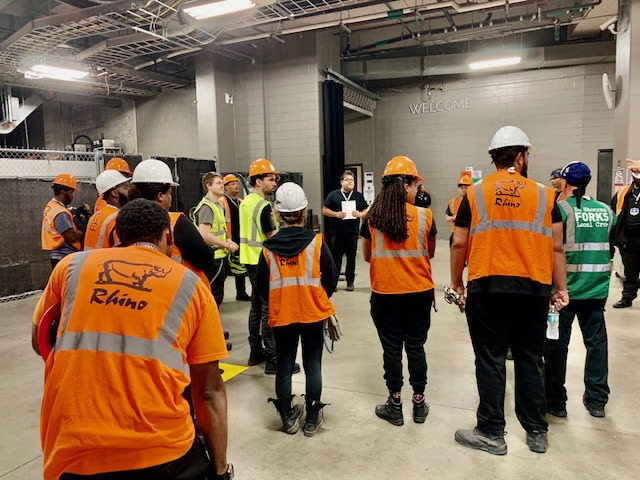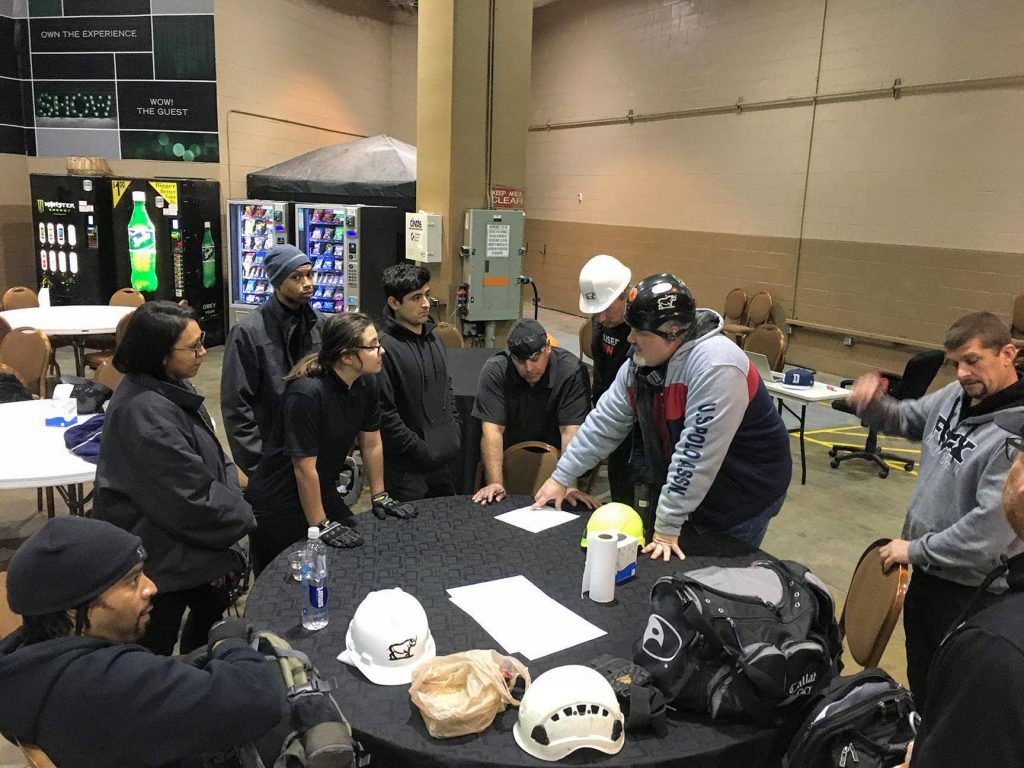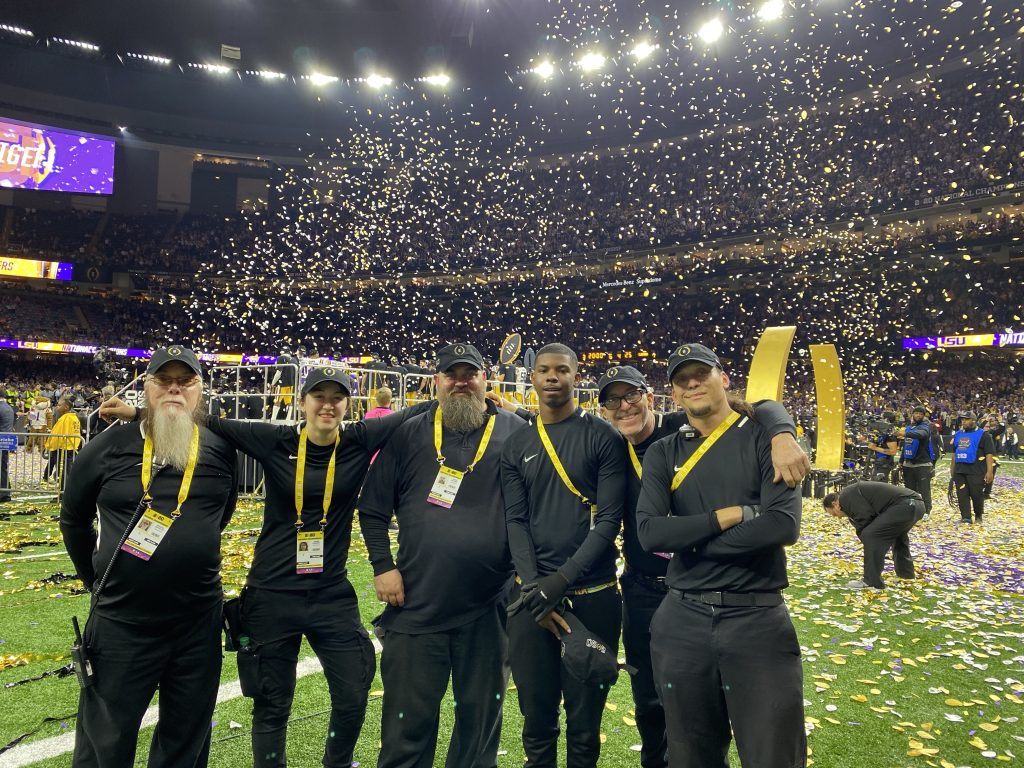

The Importance of Stagehand Safety Meetings
If you’re wondering what a safety meeting is and why it matters, it’s time to catch up with the rest of us! Safety meetings are vital to maintaining a safe production. Most crews do safety meetings at the beginning of the load-in. Fresh minds are receptive to safety messages, providing an ideal opportunity to reinforce essential guidelines. Just like an impenetrable force field in a video game, this heightened awareness diminishes over time. So, it’s essential to address safety concerns throughout the day. Start adding safety meetings mid-day and end-of-shift debriefings.
Pre-Shift Safety Meetings: Set the Tone for the Day

Safety meetings conducted at the start of shifts hold immense value in setting the tone for the day. Fresh crew members, unburdened by fatigue or distractions, can fully absorb safety messages. These meetings offer an opportunity to discuss potential hazards and reiterate safety protocols. By openly sharing experiences and insights, crew members can collectively improve their understanding and adherence to safety guidelines. Start incorporating pre-shift safety meetings before load-outs too.
Mid-Shift Safety Meetings: Sustain Safety Throughout the Day (or Night)

Exemplary crews understand that maintaining safety requires consistent efforts. Safety meetings held mid-shift, such as after meal breaks, can revitalize the crew’s vigilance and act as crucial reminders of hazards that evolved throughout the shift. Stagehands might be returning to an incomplete stage deck after a break, or weather conditions may have worsened. It’s worth reminding stagehands of stage areas not yet safe for walking or reminding the crew of drinking water with electrolytes during a hot, outdoor summer festival load-in. Mid-shift safety meetings offer an opportunity to reemphasize safety measures. By taking just a minute to refocus, crews can mitigate risks and maintain a safe production.
Debriefings: The Key to Continuous Improvement

Debriefings allow crew members to reflect on the outcome of the job, analyze what went well, and identify areas for improvement. Valuable feedback can be shared, enabling experienced and new team members to learn and grow together. Celebrating successes is equally important, fostering a positive atmosphere and reinforcing the Rhino team’s accomplishments.
Conclusion
Pre-shift safety meetings, mid-shift safety meetings, and debriefings form a powerful trio in ensuring a safe working environment. By conducting safety meetings at the start of shifts, crews lay a solid foundation for the day’s operations. Mid-shift safety meetings act as effective reminders, adapting to changing hazards and maintaining a vigilant crew. Debriefings encourage open communication and continuous improvement, benefiting both experienced and new team members. Incorporating these practices elevates safety standards and fosters a culture of proactive risk management. Prioritize safety, engage in regular meetings, and drive continuous improvement to create safe events for all who are involved!